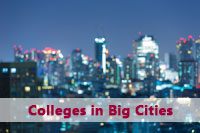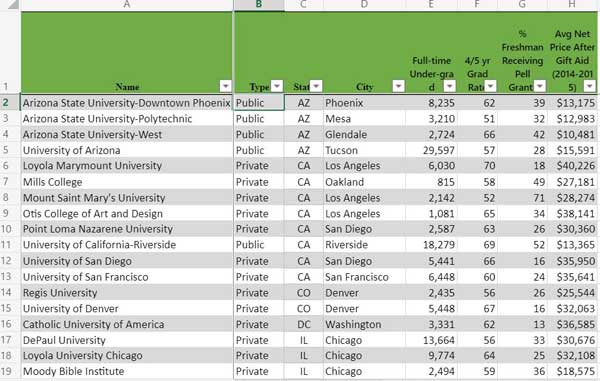 Many high school students are attracted to the idea of attending college in an urban environment. Never mind that most probably don’t participate in the activities unique to such environments once they move in, the desire is there. Although sometimes I suspect it’s more of an “I don’t want to go to school in the sticks because I can’t find a good bar” but let’s not be cynical.
Many high school students are attracted to the idea of attending college in an urban environment. Never mind that most probably don’t participate in the activities unique to such environments once they move in, the desire is there. Although sometimes I suspect it’s more of an “I don’t want to go to school in the sticks because I can’t find a good bar” but let’s not be cynical.
The fact is that there are real advantages to attending college in the “big city.” There’s the attractions such as museums, concerts, and nightlife. The population concentration should allow for more opportunities for part-time jobs, internships, and job shadowing. Then there’s the cosmopolitan aspect. Big cities have ethnic grocery stores, diverse religious institutions, and the opportunity to interact with a more heterogeneous population.
But What is a “Big City”
The problem is how exactly to do you define “big city” or “urban.” Let’s face it, when people are talking about colleges in big cities, they’re talking about New York and Boston, maybe Washington D.C. Other major metropolitan areas are probably included such as Chicago, Philadelphia, and San Francisco depending on the conversation.
There’s an intangible involved that would place schools in Philadelphia on the colleges in big cities list but not Houston. Or better yet, it would put Austin, 70 miles from and smaller than San Antonio, on a big city list but not San Antonio. So perception is involved which doesn’t do much for identifying colleges in “desirable” big cities.
A Data Definition
But I’ll make an attempt anyway. IPEDS classifies colleges by the degree of “urbanization” as defined by the census bureau. “Large city,” the most urban category is basically a city of 250,000 or more. This includes Lincoln, Nebraska, and Tulsa, Oklahoma.
There is also a “Large Suburb” category which is a suburb in a metro region with a population of 250,000. This category isn’t as clear-cut because some suburbs are well-connected to major metropolitan area. Others, however, are just part of a population concentration without a “traditional,” dominating city. And there’s also the fact, I can’t easily recognize them.
Therefore, I’ve created two lists of 50-50 schools that might qualify as colleges in big cities. The first consists of 50-50 schools in the “Large City” category and the second is in the “Large Suburb” category. I leave it to the user to determine the desirability of the Large City and the closeness of the Large Suburb. As usual, the five-year graduation rate is used for public universities and the four-year rate for private colleges.




Thank you for creating this list, Michelle! Living in the Chicago area, I wished I would have attended one of the great colleges here and took advantage of all the wonderful experience one can have here while in school. Wheaton College is a premiere school with an international student body. The Princeton Review has rated Wheaton as having the best campus food in the nation! (http://in.princetonreview.com/in/2011/08/the-college-with-the-best-food-wheaton-college-il.html) In fact, people in the community eat at their campus cafeteria since it is such a great value!
I have posted a list of Chicago area small, liberal arts colleges with above average academic admission criteria at http://www.hercollegesuccess.com/2013/07/best-colleges-for-your-daughter-in.html.